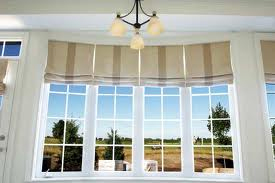Curtain Call
There’s more to choosing what to put at a window than you might imagine. Both practical as well as aesthetic considerations should inform the choice. The practical considerations include warmth and sound, privacy, light and budget.
Aesthetically, curtains will give weight to a wall, and afford at the very least, texture and at most, texture colour and pattern. They can be used to frame and show off attractive period windows, or a beautiful view, as well as to disguise ugly windows and views.
A substantial pair of interlined curtains will make a noticeable difference to the temperature of a room, particularly in an old house with original windows, usually single glazed and drafty, but as an essential part of the architectural features, hard to replace. Curtains will even help to keep the cold out and the heat in, in a more modern double glazed environment but in any case, interlining gives a luxuriant look to curtains and needn’t be just for warmth.
Often, though, radiators have been placed inconveniently under the windowsill and so full-length curtains can actually prevent a room from warming up, instead of keeping it cosy. Where the aesthetic calls for long curtains, but they are not practical, then a happy solution might be to have roman blinds, interlined for warmth if necessary, with long curtains either for display only, or that can be part closed, leaving the radiator exposed.
Where a window is overlooked, and privacy is important, there are now quite a few more alternative options to nets. Aside from the traditional voiles and venetian blinds, roller blinds are now designed to pull up, rather than down (bottom up blinds), so that light can be let in at the top of the window, whilst keeping the lower level covered. Much improved stick-on window films give the look of etched glass and come in a variety of patterns too – they can even be designed specifically – or there are films that give the glass a reflective, mirrored surface, thereby preserving privacy.
Most obviously perhaps, curtains are useful as a way of keeping the light out and where this is a consideration, blackout lining will prevent any light seeping through even the lightest of fabrics. A dark bedroom is recommended as an aid for insomnia sufferers, and it certainly helps to keep young children from rising with the larks. Roman blinds are often really effective for keeping out the light because they often lie closer to the window than curtains where light might show where the curtain pole sits away from the wall.
When the budget is tight, then roman blinds are a good way of saving money, as they use a lot less fabric than curtains. They are also quite modern in their simplicity. Even where there is no particular reason to have curtains, fabric will absorb sound, and take away that echoey feel that can a room can have when furnishings are at a minimum. On the other hand, sometimes just pelmet or valence, or indeed a strings of lights, bunting or beads, ribbons or trimmings, strung around a window is all that is needed to add the necessary flourish or finishing touch.
If you would like some help with your home or office – Nicky Barclay runs Shoestring Style in and around Tunbridge Wells and can be contacted on 07771 522235 www.shoestringstyle.co.uk






Comments